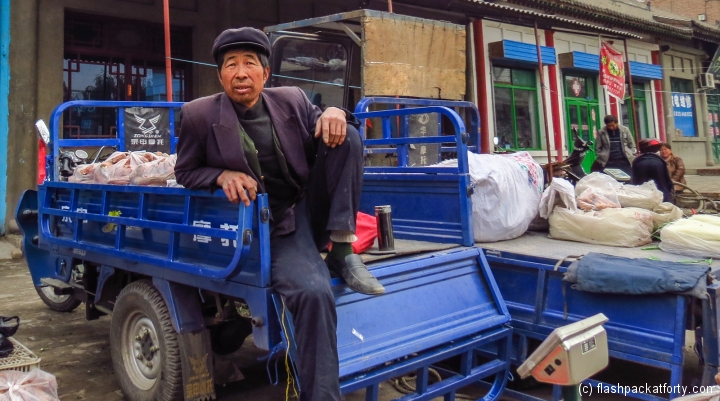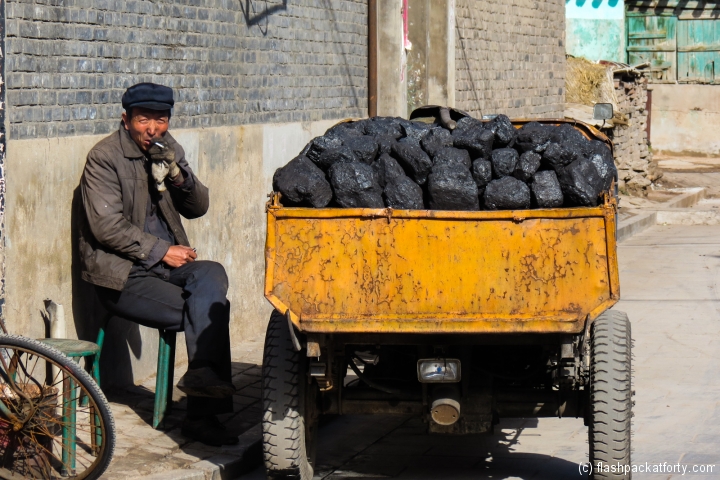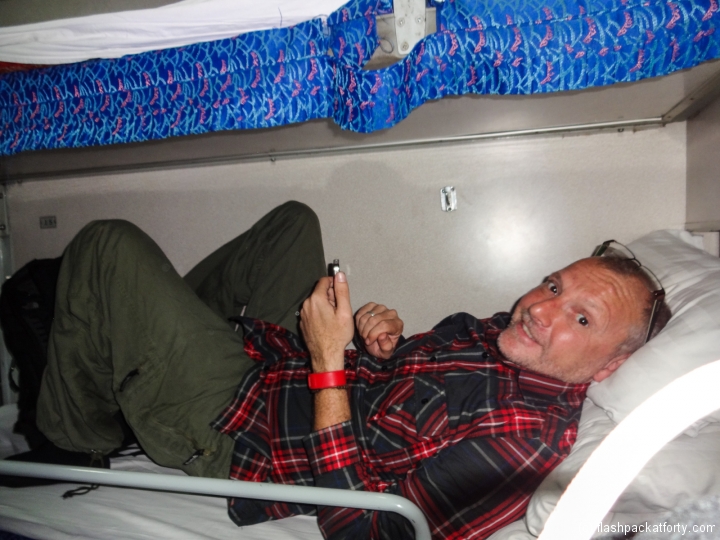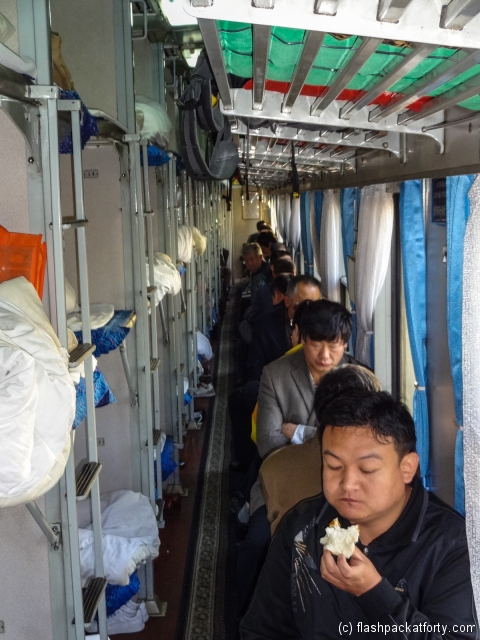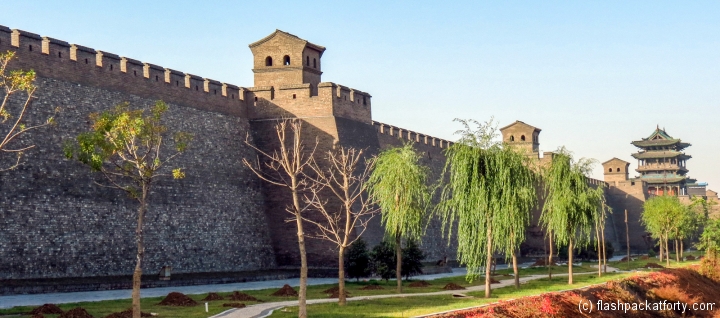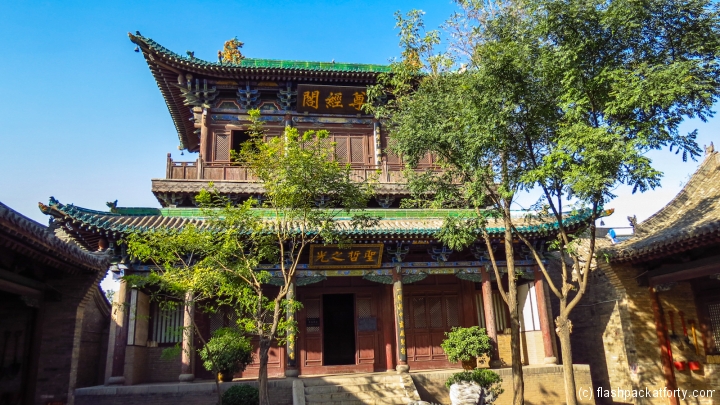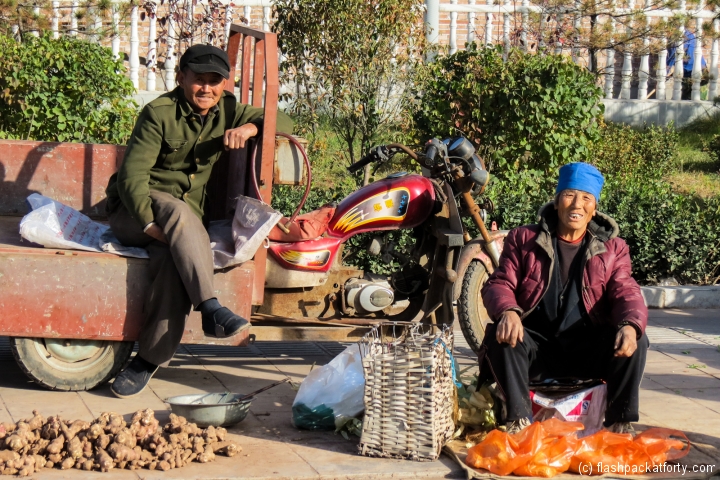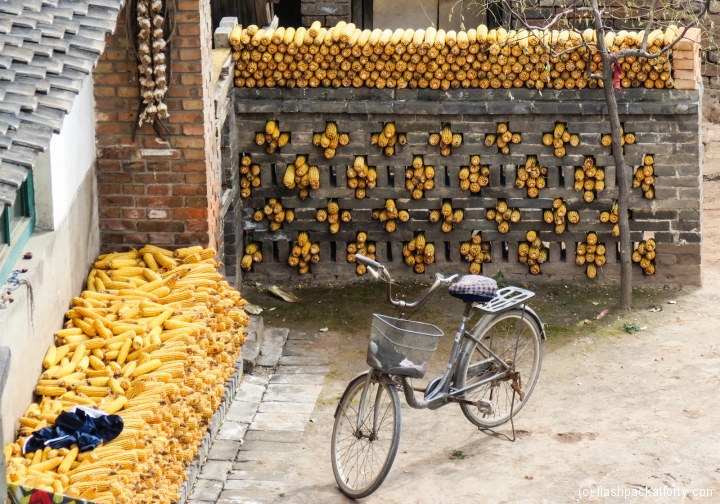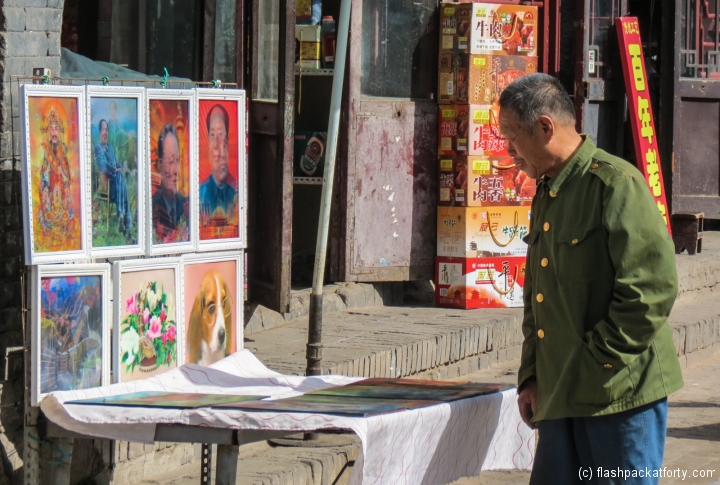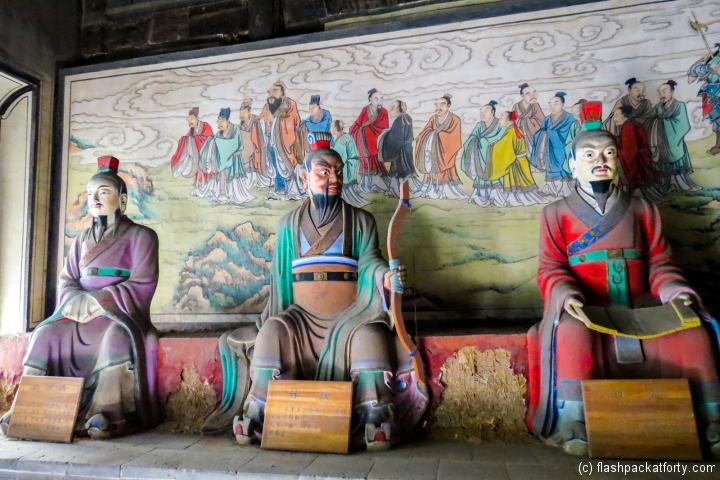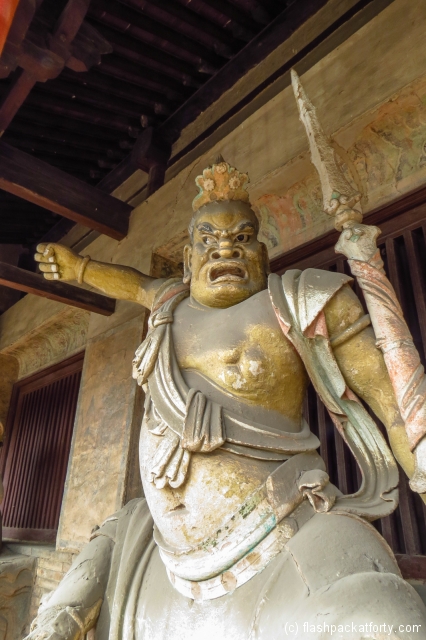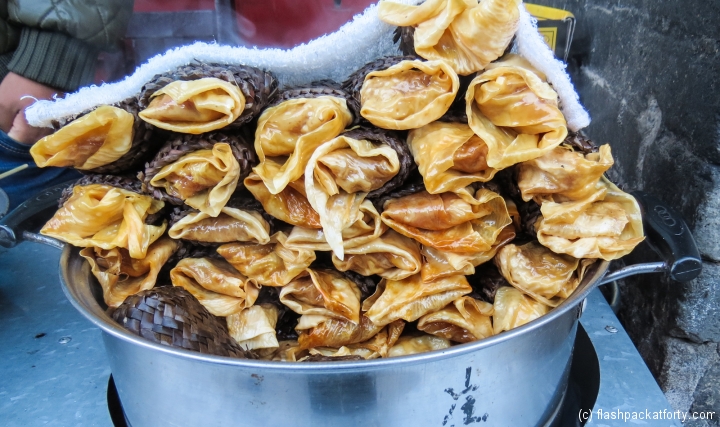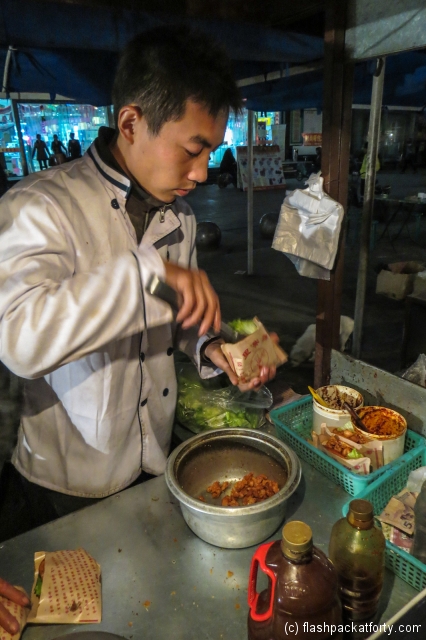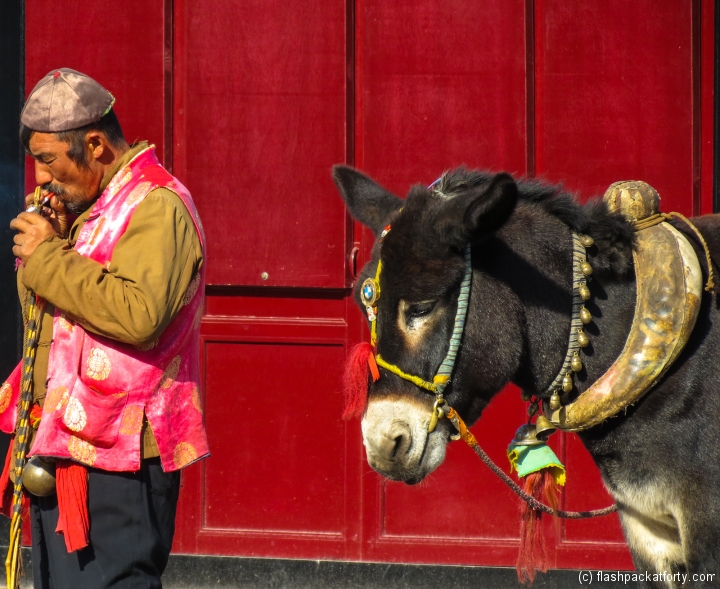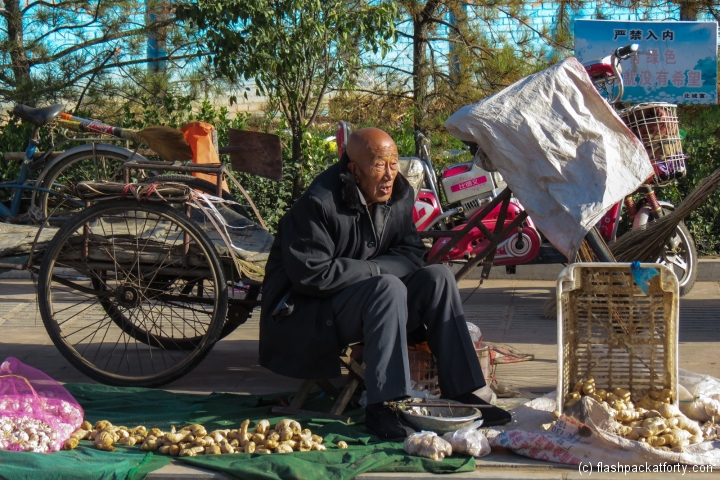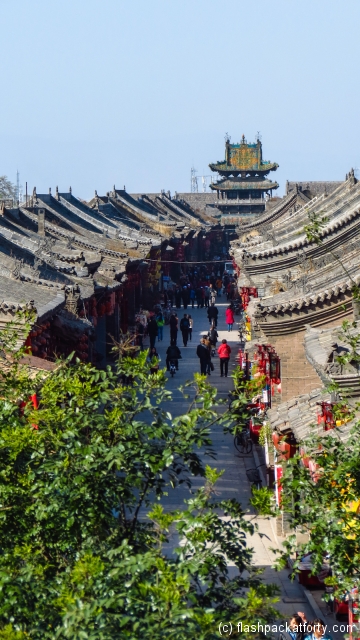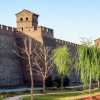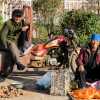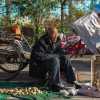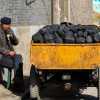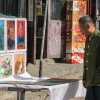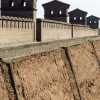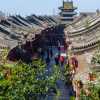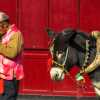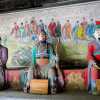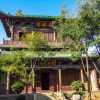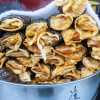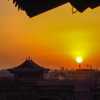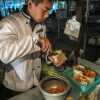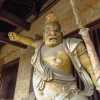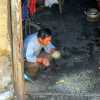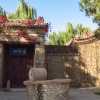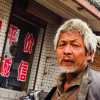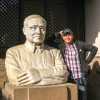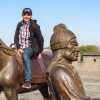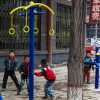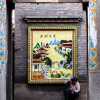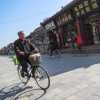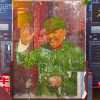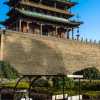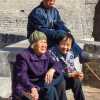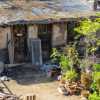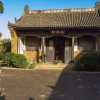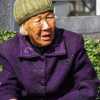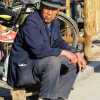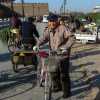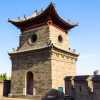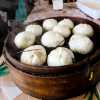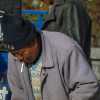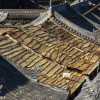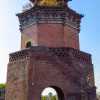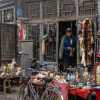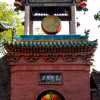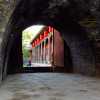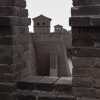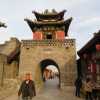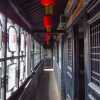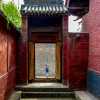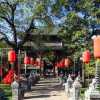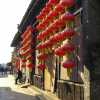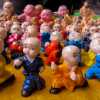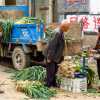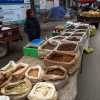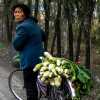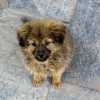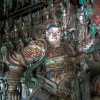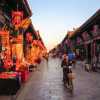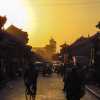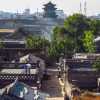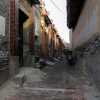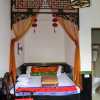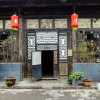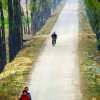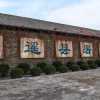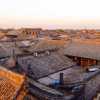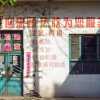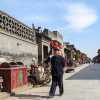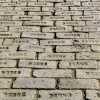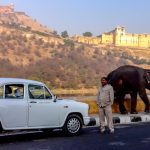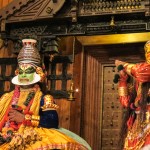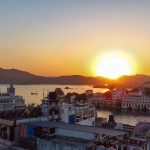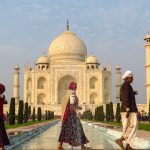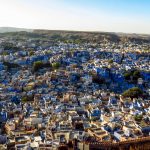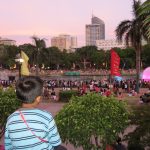Flashpacking China: From Beijing to Pingyao
A Step Back in Time at the Ancient Walled City of Pingyao
The time had come to leave Beijing, and head west to the province of Shanxi, to visit a city called Pingyao.
We’d managed to see all the main sights we wanted to in Beijing, but there are always other things to do and see. Our last day in Beijing had been a complete washout. From the moment we awoke, the sky had remained black and the heavy rains didn’t relent. We had planned to do some more sightseeing, and possibly a bit of shopping, but in the end we extended our hotel room until 6pm and took cover.
It was the sort of weather you did not want to be out in. By the time we left our hotel, not far from Tiananmen Square, it was about 5.30pm, pitch black and the roads had become a little flooded. We’d decided to catch a packed bus to Beijing Main Railway Station, which we just about managed to squeeze our bags onto. It was difficult trying to dodge getting drenched by mopeds driving without lights on the pavements and roads. It seemed fitting that we arrived at Beijing in the rain and were leaving Beijing in the rain. We’d had two days of great weather, two days of thick smog and haze, and one day of torrential rain.
Beijing to Pingyao by Hard Sleeper Train number 1163
Train travel is an excellent way to travel around China. It is reasonably priced, many of the journeys are 8 hours plus and the trains have sleepers. You can check-in to your Chinese hotel room from 6am, at most places. This makes overnight travel by train a good money saving option for those travelling on a budget. Booking tickets has proved relatively easy despite the language barriers, just do your research and go armed with a list of trains and destinations in Chinese. Great you think i’m ready.
The problem is you can’t get a bed on a train because there are too many Chinese and not enough beds. This was our third choice train, and we had to settle for a hard sleeper with a middle and top bunk. The hard sleepers are small to say the least, you couldn’t possibly sit up and have to climb ladders and squeeze yourself into the space on all fours.
However, the bonus is you share the carriage with about 100 Chinese people, as there are no doors or curtains. You witness the arguments, hear the music playing, see the laughter and the tears, it all makes for a very interesting journey and if you’re lucky you’ll get some sleep once the lights go out. We had a pleasant journey with friendly and charming Chinese people, of course not a word of English was spoken a part from the occasional “hello” followed by giggles.
Arriving at Pingyao Railway Station
We’d enjoyed our first two locations in China, but were hoping to see a little less city life and something a bit different in Pingyao.
We got off the train at 7.30am at Pingyao Railway Station. As is customary around Asia, there were a few hawkers at the station offering hotel accommodation and free transport, all very polite though. We’d booked our hotel the night before using a Chinese online hotel booking sites; they were considerably cheaper than anything offered for the same hotel and room by the big international aggregate hotel booking sites.
We decided to walk to our hotel, as it was only 15 minutes by foot. We were a little shocked at the change in the weather as the temperature had dropped by about 15 degrees and you could see mist from your breath. We decided it would be nice to stay in a traditional hotel within the ancient city walls of Pingyao. At under US $18 for TV, private bathroom and breakfast I think it was a good deal as you couldn’t wish for a more central location.
The traditional courtyard style hotel didn’t let us down and we were pleased with the authentic feel to the house. The shower was piping hot, but you did need those duvets in the evening, no central heating! After a charming check-in conducted through the proprietor’s electronic translation device, one word at a time “pay” “room” “two” etc., we were free to explore Pingyao.
Things to do in Pingyao
We think the best way to explore the Ancient City of Pingyao is on foot.
However, there are loads of tuk-tuks that appear more like electric golf carts , variations on this design can accommodate from two up to twelve people. We only used these when heading out of the ancient city to visit other sights of interest that weren’t within walking distance. Prices are cheap, the cost is 10 RMB for two from Pingyao Railway Station, 5-10 to points around the ancient city should you tire of walking.
We spent our first morning walking around the local market, along the northern side of the wall. Here locals sell fruit and vegetables and other foods. I passed on a bucket of witchety grubs, after my last experience in Cambodia trying this ‘delicacy’. Instead, we plumped for a tray of ten steamed dim sum and a very large bowl of soup each. Brunch cost us $2 .25 for us both and kept us going for the days sightseeing ahead.
We then headed back inside the city walls for a walk around the ancient city.The wall is surprisingly large, measuring six kilometres in length for a complete loop. It is easy to spend a day or two here visiting the many temples, old family residences and museums. Before coming to Pingyao we’d read that the place was very touristy and packed. Well there are plenty of souvenir shops, and street vendors, taxis, restaurants and hotels to cater for tourists. When we visited Pingyao was very quiet, there seemed to far more locals than tourists, I guess we just got lucky.
We picked up some hats, gloves and scarves from the various traders that line the streets, they seemed a bit desperate for the custom. Despite having four layers of clothing on each we were still feeling the cold, and realised we’d need to head into the new town, were fewer tourists venture for some warmer clothes.
Walk The Ancient City Walls of Pinyao
We spent a few hours walking around the top of the walls. We seldom met people making the same journey and enjoyed the walk almost entirely without interruption from anybody else, this is something quite rare in a Chinese city. The views over the traditional city rooftops and chimneys give a different perspective. As do the glimpses into life that you snatch as you walk around, such as the drying of thousands of corns and other vegetables on roofs.
Pingyao Museum Pass
There are many historic family houses, temples and museums to visit in Pingyao. You can purchase a ticket for 150 Yuan, which gets you into most places you’ll probably want to visit. We thought it was good value. Places we particularly enjoyed were the Armed Escort Museum, the Government Office Buildings, The Rishengchang Draft Bank, The Confucian Temple and the The King Qingxu Temple. We’d also recommend going up the City Tower, at sunset or night to see the city lights, this isn’t included in the museum pass and costs 5Yuan. There are many more places of interest that we visited in Pingyao, and still managed to grab a few beers in the quiet and traditional bars around the old town.
Our must see destination though is the Shaunglin Temple, its around 6km outside the ancient city. Check the pollution levels before cycling, as you’ll probably need a mask and goggles if it’s a bad day. You don’t really notice the pollution in the old city. We took an electric tuk-tuk and the return journey cost us 50 Yuan. We enjoyed this visit to the temple as we were both enthralled by the quality of the ancient sculptures here.
We found some of the 2000 plus sculptures quite disturbing they seem to be staring right at you – freaky. After our visit we managed to take a walk around another local market, outside the temple. Again this was packed with friendly characters. As we got in our tuk-tuk to leave, from nowhere there were about 20 children waving us off all shouting “bye bye” which can’t fail to warm your heart.
Pingyao Regional Food Dishes
We did eat in the ancient city a couple of times for dim sum and tried some of the regional dishes in a restaurant. We tried the Pingyao beef, more like corned beef, and it was good but not amazing. Not a patch on Japanese or Korean beef. The Pingyao noodles are on every menu here too.
They come in all different shapes and sizes, you can see them being prepared and cut as you walk around the streets of the old town. We had them served cold with a dipping sauce and they were very pleasant as a starter or an accompaniment to a meal. The great thing about Pingyao is you can grab a beer or coffee anywhere and sit on the street watching the world go by.
Shopping in Pingyao New Town
Here is where the locals shop and eat, so you’ll find it much more competitively priced if you’re on a budget, so is the best place for ‘Pingyao cheap eats’. As you step outside the walls it feels like you have arrived in a different city.
There are restaurants, malls and markets with street vendors (selling excellent food for 15cents and 20 cents as opposed to a dollar inside the ancient city). Here you’ll also find coats and jackets for 10-15 US$ after much negotiation. Some of which are fairly passable fakes, but not of the highest quality, you’re better of shopping in Xian or Beijing for these. The quality and price is pretty amazing, if you’re in the market for that type of thing!
We’ve found its best to get a vendor on his or her own, as they don’t like others to know they’ve given a foreigner to good a deal. You really do need to negotiate, via your mobile phone calculator; a little Chinese (no matter how badly pronounced) does seem to sweeten the deal. As the weather was so cold here in the evening we needed extra jackets, socks and underwear as we’re struggling to get laundry done at the moment and there is only so much hand-washing your underwear can stand before it needs replacing.
In order to entice people into the shops, some have promotions on were a singer on a stage throws free things into the crowd. Its a riot, and from what I’ve seen in my short time here in China, the Chinese don’t need much of an excuse to have a slanging match or fight with each other.
Slight exaggeration, I suppose with so many people concentrated within the large cities we’ve visited in China, it is perfectly natural to see people arguing and getting physical. I digress; the point is I don’t think this is probably the best idea to entice customers into a store. Although I did manage to pick up a couple of free pairs of socks, and didn’t get an elbow in my face either.
Toilets in China
If you’re of a squeamish disposition then some toilets in China will definitely make you ill. We’ve omitted the worst from the gallery on decency grounds. However, you could easily avoid these by sticking to tourist zones or using toilets that have been graded by the Chinese authorities, they are working very hard and successfully improving public conveniences. I have, however, seen some pretty eye-opening sights. I’m not used to peeing in-front of four men having a crap in ‘open plan’ cubicles but had to one day in Beijing. Also some of the outside rustic toilets, hole in a wooden floor, are a little stomach wrenching and smelly.
I’ve chosen to use these places but I’m sure if this was an issue for somebody they could easily avoid having to do so. Don’t let this put you off visiting China, you can poo in as much or little style as you require provided you stick to the main cities, hotels and tourist sites, although you may have to squat. At least it will be in private, and remember to always carry a bit of tissue with you.
Why travel to Pingyao?
Whilst not exactly off the beaten track, this is a fairly popular tourist destination, we did benefit from some space after the exhilarating cities of Shanghai and Beijing . We found staying in Pingyao an oasis of calm. We really did feel like we’d stepped back in time, despite the momentum of change taking place even here.
The ancient city still retains its essential character if you look behind the many restaurants and souvenir shops. The charm of the old city allowed us to gain an insight into China’s past, as well as witness the speed of growth seeing hotels being built and the massive housing developments taking place outside the city walls. The historic sites, and the fact you can walk to most make it a worthy addition to anybody’s China itinerary, if you have the time.
Our highlights were the people of Pingyao, who are friendly characters, who just love having their picture taken. In fact, don’t try walking past a character without taking a snap or they’ll be very disappointed. We also enjoyed visiting the Shuanglin Temple, not because of the architecture of the temple, but for the sculptures that put the fear of God into you. The nightmares are nearly over now.

